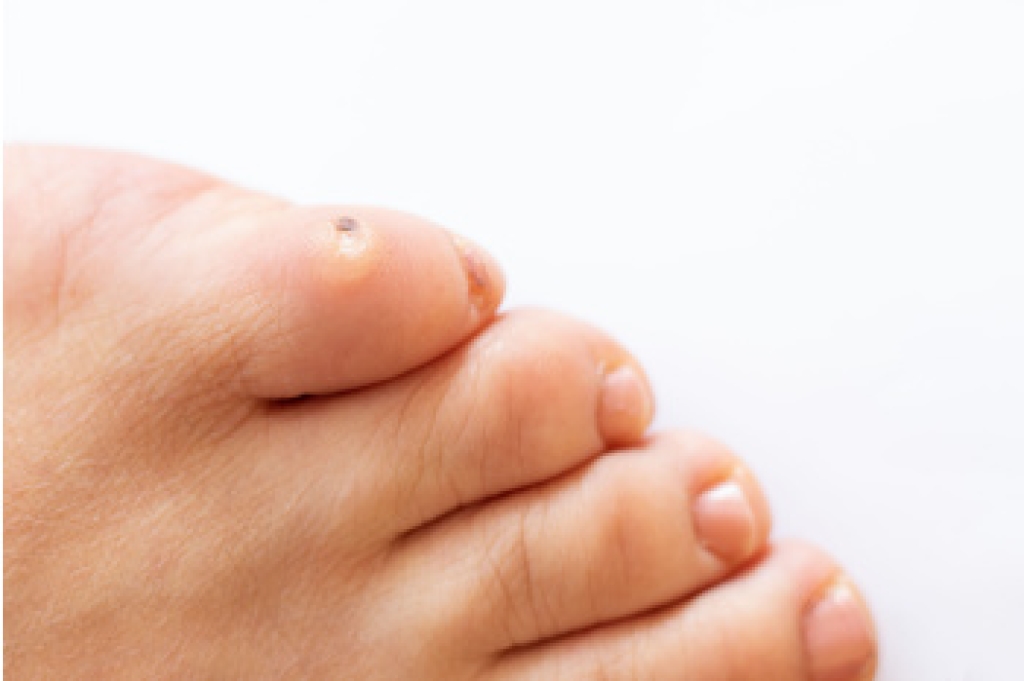
A foot corn is a thickened area of skin that forms in response to repeated pressure or friction. A corn often develops on the toes or sides of the feet and becomes painful when walking or wearing tight shoes. Corns can be caused by wearing ill-fitting shoes, abnormal foot structure, or repeated rubbing against a shoe surface. Risk factors include spending long hours on your feet, wearing high heels, or having foot deformities that alter pressure points. A podiatrist can safely remove corns, address the underlying cause, and offer guidance on proper footwear and preventative care. A foot corn can be painful and can cause difficulty completing daily tasks. If you have this condition, it is suggested that you consult a podiatrist who can offer relief and prevention tips.
If you have any concerns regarding your feet and ankles, contact Darlyne Cange, DPM of Cange Podiatry, DPM, PA. Our doctor will treat your foot and ankle needs.
Corns: What Are They? and How Do You Get Rid of Them?
Corns can be described as areas of the skin that have thickened to the point of becoming painful or irritating. They are often layers and layers of the skin that have become dry and rough, and are normally smaller than calluses.
Ways to Prevent Corns
There are many ways to get rid of painful corns such as wearing:
- Well-fitting socks
- Comfortable shoes that are not tight around your foot
- Shoes that offer support
Treating Corns
Treatment of corns involves removing the dead skin that has built up in the specific area of the foot. Consult with Our doctor to determine the best treatment option for your case of corns.
If you have any questions, please feel free to contact our offices located in Glen Burnie and Ellicott City, MD . We offer the newest diagnostic and treatment technologies for all your foot care needs.




